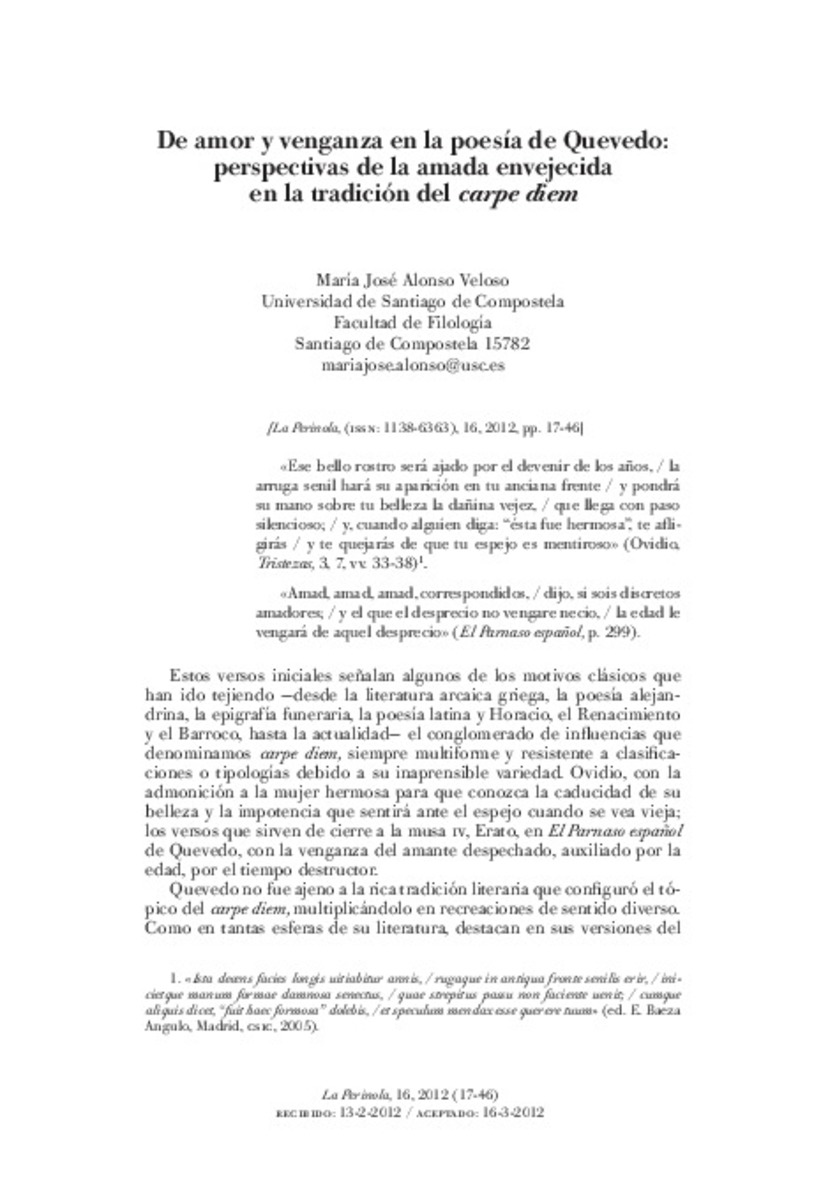De amor y venganza en la poesía de Quevedo: prespectivas de la amada envejecida en la tradición del carpe diem
Files in This Item:
Statistics and impact
Items in Dadun are protected by copyright, with all rights reserved, unless otherwise indicated.








